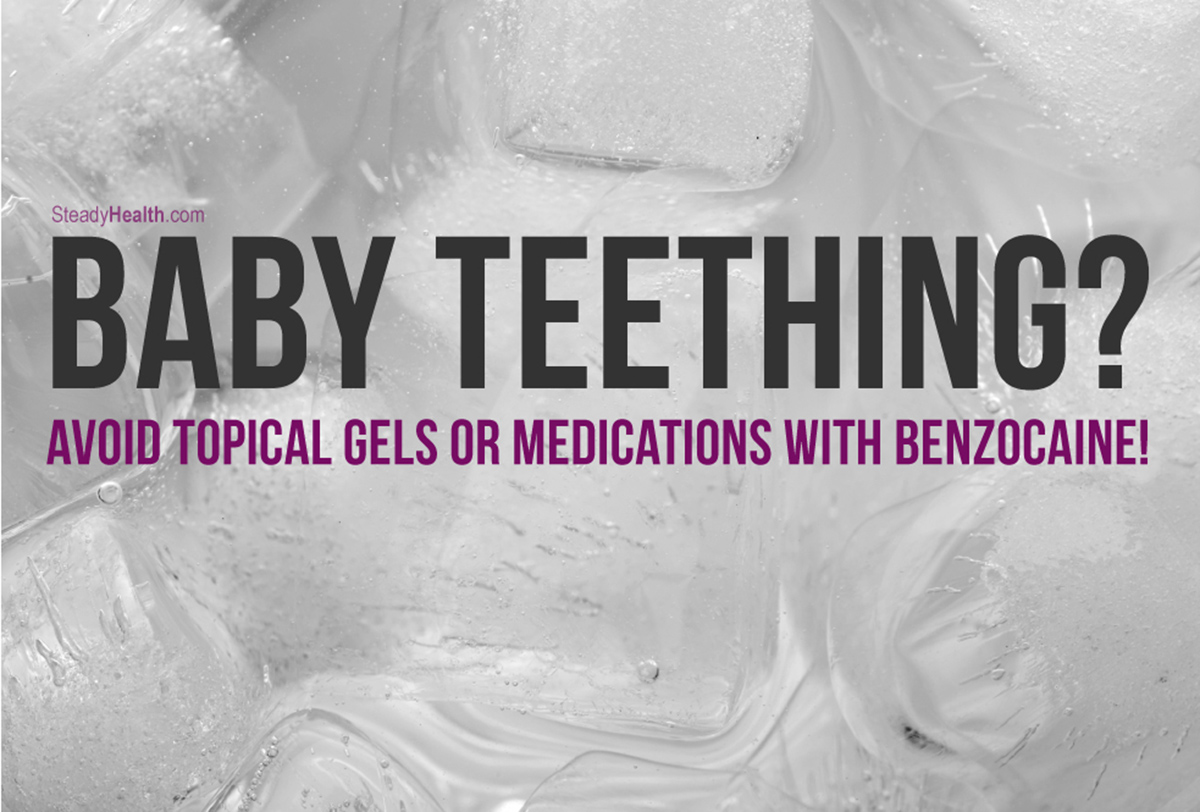Parents tend to overexaggerate the intensity of teething symptoms and teething pain in their children [1]. The teething process is not that painful at all to be using all the potentially poisonous medications and gels that we use. Some of the teething remedies are proven to be dangerous, but people still choose to use them on their children.
What is Benzocaine?
Topical Benzocaine is an anesthetic commonly used to relieve teething pain, periodontal irritation, burns, and wounds, among other things. [2, 3] The FDA has issued several warnings about the use of teething gels containing Benzocaine. Just like lidocaine viscous, Benzocaine is a local anesthetic that can be found in well-known teething over-the-counter (OTC) teething remedies such as Orajel, Baby Orajel, Orabase, Hurricaine, and Anebesol. [4]
Benzonaine in these products really works in soothing fussy babies, but — according to the FDA — it can be quite dangerous, especially for children under two years of age. Oral gels often contain Benzocaine in concentrations from 7.5 to 20 percent, which is considered a lot. Exposure to such large Benzocaine concentrations may result in secondarily cause anemia, hypoxia, cyanosis — abnormally bluish-brownish discoloration of the skin caused by blood circulating in the venules and superficial capillaries — and methemoglobinemia. [5]

Benzocaine-induced methemoglobinemia (MetHb)
According to several studies, even though most Benzocaine exposures resulted in minor to no effects, some patients were admitted to a critical care unit and required treatment with methylene blue, which converts methemoglobin to a more efficient type of hemoglobin to carry oxygen throughout the body. [2, 7]
Because methemoglobinemia is a disorder in which the amount of oxygen in the blood is greatly reduced, the most common treatment is low-dose intravenous methylene blue and oxygen therapy.
How to recognize Benzocaine poisoning
Even though experts keep talking about the dangers of topical gels and medications with Benzocaine, some people still won’t listen and use these products on children. It may be hard to recognize Benzocaine poisoning and Benzocaine-induced MetHb at home, but some of the common signs include:
- bluish-colored skin, lips, and nails
- shortness of breath
- decrease in energy
- light-headedness
- confusion
- headache
- rapid heart rate
The condition is not hard to diagnose when the child is admitted to hospital. A person with MetHb will in most cases have a bluish-brownish looking skin due to cyanosis. The healthcare provider usually performs several blood tests to diagnose the condition. Common tests include pulse oximetry (checking the oxygen level in the blood), and arterial blood gas analysis (a test to check the level of gases in the blood). The patients often do well once the toxin that has caused methemoglobinemia is identified and further avoided. [8]
Adults are at risk as well
Benzocaine products are widely used by adults too in form of gels, sprays, and lozenges. Benzocaine products are used by doctors and dentist as a local anesthetic to numb the membranes of the mouth and throat during many procedures such a echocardiograms, intubation, endoscopy, and feeding tube replacements, and several others less common procedures, but they’re trained to work with these substances, and will know how to react in cases a patient is sensitive to the anesthetic. [9]
Safety of our children should be the top priority
Pediatricians all across the world — including the American Academy of Pediatric Dentistry — don’t recommend using teething gels with Benzocaine [10]. To reduce the possibility of poisoning the children and causing conditions such as methemoglobinemia or cyanosis, the clinicians working with children should speak to parents and caregivers about the dangers, appropriate concentrations, and doses of these products.
Crying of our babies hurts us as parents, and it’s in our nature to react quickly and try different methods until we find the one that works. The American Academy of Pediatrics recommends healthier alternatives for teething pain such as a cold teething toy or a washcloth, and gum massage with a clean finger.
Teething is a normal process in all babies, thus the FDA doesn't recommend any drug or homeopathic remedy for it [11]. If the natural soothing techniques fail to calm the baby, it’s recommended to contact your baby’s doctor who can suggest other safe treatments and provide supervision in case something goes wrong.
- Photo courtesy of SteadyHealth.com


Your thoughts on this